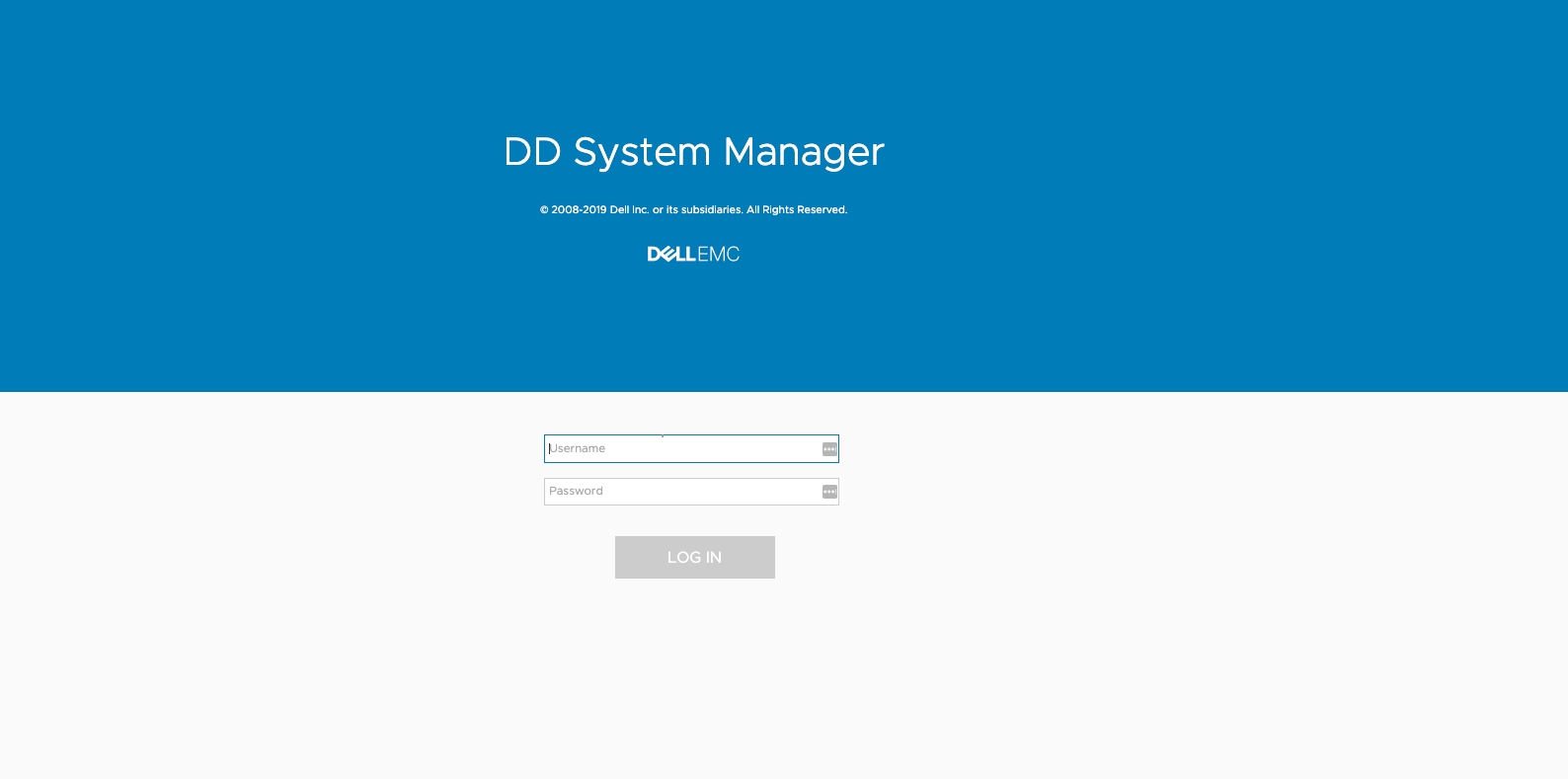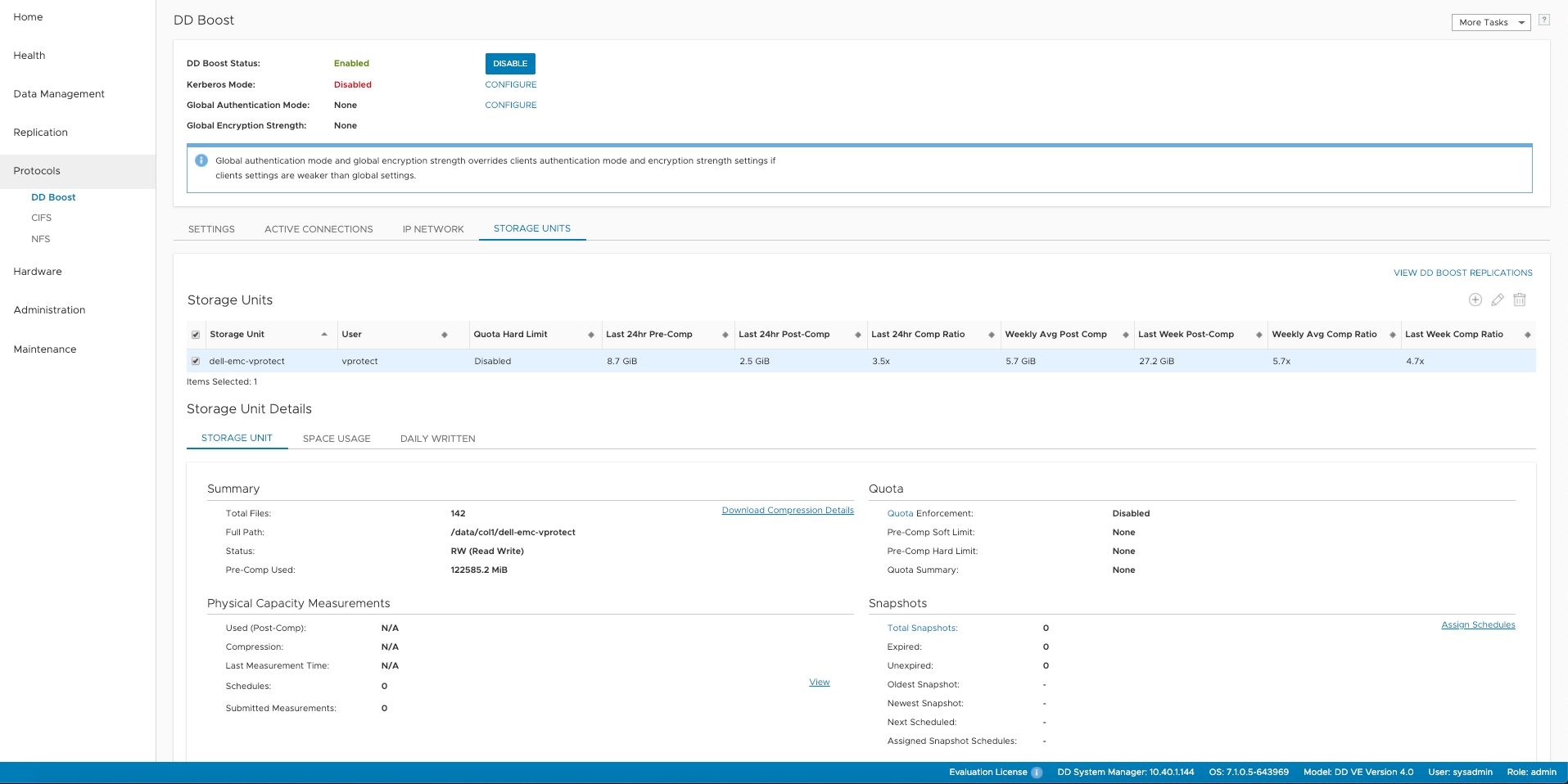Dell EMC Data Domain
Create a new Backup Destination (Dell EMC Data Domain)
Go into the backup destination menu and click on Create a backup destination.
Provide a name and description for the new backup destination.
Specify the retention days for full and incremental backups.
Specify the retention versions for full and incremental backups.
Choose and assign the node configuration to which you want to attach the new backup destination.
Add to one or more storage paths.
example - /vprotect_data/backupdestination
Save the configuration.
DD Boost FS Plugin
To boost the backup process we recommend using a single Storage Unit and mtree, and subfolders on the BoostFS for multiple backup destinations (with possibly different retention settings).
No additional data copy is needed in the store phase if staging is using the same file system as the backup destination.
The Setup assumes a single Storage Unit and a single mtree for all backup destinations.
The staging space should always be a top directory, and all backup destinations should be defined as separate subfolders of this file system.
Storware Backup & Recovery handles retention, and each backup destination may have different retention configured.
A single Storage Unit will also affect replication as it has to cover all backup destinations, and may replicate temporary data from the staging space or mounted backups.
Sharing the same BoostFS across multiple nodes allows the administrator to create backups on one node (one host/environment) and restore using a different node (to a different host/environment).
UID/GID ownership and permissions must allow Storware Backup & Recovery to read/write contents of the BoostFS share.
To meet these requirements, the user and group named vprotect that was created during the installation process must have the same UID and GID on each Storware Backup & Recovery node machine. You can create this before installing Storware Backup & Recovery packages or change it after installation.
Data Domain User requirements:
user must have backup-operator management role
user must be assigned to DD Boost Storage Unit
Prepare your PowerProtect DD as a backup destination:
Login to PowerProtect DD and create an NFS Storage Unit called
storware-vprotect


Download BoostFS RPM from the Dell EMC site.
Install BoostFS:
Save the password for BoostFS.
Add the /etc/fstab entry:
Mount the fstab entry:
For a manual, one-time mount you can run this command:
Confirm with
df -hthat your/vprotect_datais mounted Note: Remember to specify the backup destination path as a subdirectory of /vprotect_data if you would like to use the same storage unit as a staging space and backup destination - for example: /vprotect_data/my-backups.Set ownership to the vprotect user on the directory /vprotect_data.
Set ownership to the vprotect user and data domain group on the directory /vprotect_data/my-backups.
where 'gid' is the GID of data domain user specified in Synthetic DD Boost backup destination configuration.
Set read and write privileges for both user and group to the directory /vprotect_data/my-backups.
Microsoft Hyper-V
Additional actions are required when protecting Microsoft Hyper-V. Mounting the Data Domain share should be done in the same way as described above. After mounting the share, do the following:
Log in to your Data Domain and check UID of the user that is used to connect to Storware Backup & Recovery
Log in to Storware Backup & Recovery Node and set the vprotect user ID to the same as the DataDomain user. If there are multiple nodes, the ID must be changed on each of them.
First, make sure that no other user has this ID
If the command returns a result, it means that this UID is taken, for example:
In this case, the ID of that user should be changed to another first, and only then ID of the vprotect user can be changed.
If this command returns no results, it means that this ID is not taken and it is possible to change the vprotect user ID
Reload permissions